
How IoT is related to the facility management Industry
Running a facility is a role that includes a broad variety of day-to-day tasks, whether it be catering, health care or a particular sector. Keeping track of paperwork, maintaining a high level of customer satisfaction and protection, while producing income, is a challenge.
Facility managers adopt technology as a means of delegating responsibilities, increasing the efficiency of the workforce and enhancing customer loyalty. The Internet of Things, among other innovations, aims to create an all-in-one platform for monitoring all facets of facility management - finance, paperwork, customer care, etc.
Trends in Facility Management Software

In view of the wide variety of activities that the facility manager must perform or supervise on a regular basis, most businesses use technology to deliver impeccable service to customers or visitors. When technologies and applications evolve, FM software becomes more flexible and multifunctional. Make sure that the framework you use for facility management is aligned with these trends to remain among the pioneers in digital transformation.
- Third-party integrations: Companies are no longer comfortable using different tools to control services, rather they are pursuing integrated systems which can be linked with all the instruments employed by the personnel in a couple of clicks. Integrations are particularly helpful because the facility manager does not have to transfer all the details about the business into a new framework. Via incorporation, workers don't need a learning curve, which ensures that digital transformation would not hinder the productivity of the business.
- AI and predictive analytics tools: Technology will help facility managers make most executive decisions. Thanks to predictive analytics, companies can plan in the long term, replace dysfunctional equipment without creating bottlenecks and downtime at the facility, and eliminate human error from the decision-making process. Thanks to the Internet of Things and Artificial Intelligence, supply chain managers will be able to capture employee performance, resource usage, customer satisfaction, and other important metrics. As a result, the decision-making process will no longer be trial-and-error but a calculated process.
- Cloud computing: Cloud computing provides facilities managers with greater flexibility to access working data and communicate outside the workplace. The use of cloud software also eliminates the risks of data loss and system failures, as all information is stored on a central server accessible from any computer. The running costs of facilities are projected to decrease by 40 per cent in cloud computing. It will improve the scalability of small companies and will eliminate significant numbers of architectural inspections.
- Improved security: Due to the tightening grip of data security and safety, failure to follow rules will jeopardise businesses. Companies use sophisticated encryption measures to ensure bulletproof protection against data breaches.
- Including practical intelligent software
- layers of authentication that help identify people who link to the system
- Customizable access permits — managers may selectively permit data entries to be viewed
- A framework to flag security threats and track them – block unauthorised users, identify suspect activity patterns, etc.
- Mobile accessibility: For versatility and response time, it is important to build custom mobile apps that can access data associated with the facility. The ability to control the state of all major activities at the facility at any period increases the versatility and efficiency of the workplace and helps decision-makers. In this way, managers can better organise, handle multi-task and effectively manage the communication process.
Challenges in Facility Management
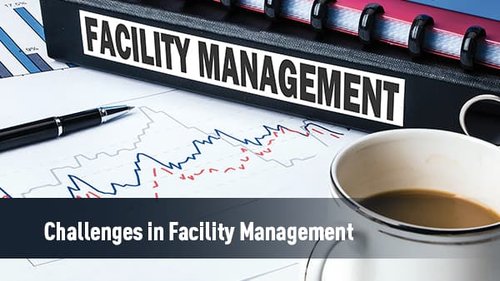
In order to better automate and handle operations, facility managers must be mindful of the issues they face in the workplace. And the most pressing problems in FM systems are here.
- Real-time collaboration: Outdated systems do not allow several team members to continuously update the data and discuss their decisions. The inability to collaborate at installations leads to miscommunications and raises waste. Technology for real-time monitoring of facility operations lets facility managers obtain immediate alerts of what is happening in various areas of the facility. Via cloud computing, several team members are able to view spreadsheets and databases from any computer and anywhere in the world simultaneously.
- The maintenance of aging hardware: Facility managers must monitor and note the machinery and replace it with newer engines as it begins to get worn out. The whole team would otherwise face sudden shutdowns, consumer satisfaction drop and low productivity. Facility managers may use advanced technology for real-time system monitoring, including predictive analytics. A IoT-management facility software system can track the equipment condition and notify the manager in the event of signs of warning.
- Coordinating teams: It takes time and effort to facilitate an effective communication system. Too many resources are available for facility managers to keep in touch with the team — email, instant messengers, Skype and others — creating employee frustration. A safer, more streamlined way to develop a structure for functional communication is to choose a linked facilitation method. It is encouraged for team members to communicate the results of their work using resources including report generators. Digital calendars are a way to track calls and meetings and thereby improve the consistency and knowledge of the team.
- Data Storage: Facility managers must maintain vast quantities of data — the accurate handling of massive volumes of information is a challenge for many business professionals. The key problems with data storage and processing include:
- Effective recovery of data. Instant and easy access to important information on resource or labour management is open to just around ten percent of the facility managers
- Change in data storage. It is time consuming and tedious to update databases manually. The best approach for efficient recording of data is to use technology that automatically records all changes.
- Sellers organise. Long feedback periods, delays and misunderstandings have to be dealt with.
- Meeting legislative regulations for data storage compliance.
- Protection from Security Attack: Facility managers need to develop a structure that protects the system against external attacks, including a multi-factor authentication scheme, full data access control and flagging suspicious acts. Modern systems incorporate captcha checks, biometric authentication, public- and private key pairs and other advanced device security measures other than login password two-factor authentication to make the system inaccessible for intrusions and data leaks.
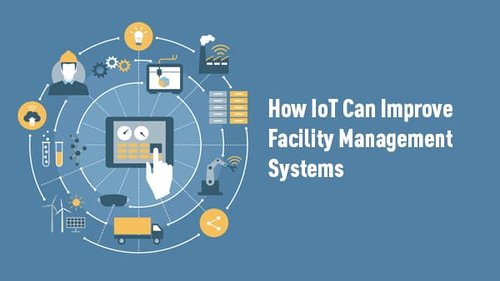
IoT technologies allow managers to simultaneously integrate all fields of the facility, track and control various operations, and to gain new insights through sensor data. The Internet of Things provides a variety of automation possibilities that increase the efficiency of the whole team.
IoT and facility management will improve performance and minimise running costs as follows:
- Automation depends on sensors. Through the data collected, facilities managers gain insights into the use of spaces. The sensors also promote predictive analytics and alert managers to risky circumstances. A connected device can automatically react to a warning by neutralising an unmanaged safety hazard.
- Operating expenses have been reduced. The Internet of Things data are used by lodging, healthcare and office premises to identify patterns of usage. Linked instruments help decide whether the demand for services is lower than normal and reduce the consumption of energy and heat. Thus, electronic services and other operational costs decrease through the Internet of Things.
- Effective production of workers. The internet of things helps to alleviate everyday challenges by leading the team effortlessly during the day. Environmental sensors maintain an acceptable level of temperature and humidity in the building. The region of the monitoring facility takes less time thanks to linked systems – meaning the team can handle more orders every day.
- Connected systems allow facility managers to update customers in real time. You will also see how many tasks each team member does during the workday and how many tasks people excel. You will also hear about their employees' results.
- Increased performance in risk reduction. In terms of contingency planning and protection, IoT is a major leap for facility managers. Linked cameras, embedded tags, ID confirmation beacons and other devices help to identify and rapidly remove threats in order to prevent crisis at the facility. The platform offers a vast collection of high-value data to facility managers that help the decision making process. In addition, organisations begin to introduce advanced planning tools that develop and collect optimised data-based routes and workflows using sensors.
What are the IoT devices for Facility Management?
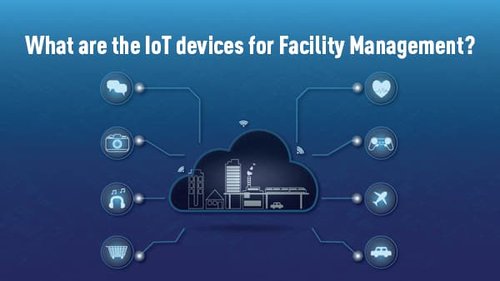
Here are some examples of FM devices that are high-level and frequently used:
Sensors: Most IoT devices are activated by sensors. Managers can access the information thanks to them, whether it is temperature, moisture, motion, speed or another aspect. The observations are then loaded to the software system for facility management and displayed. The following are the types of sensors that are widely used in facility management:
- Motion / Speed
- Dampness, moisture
- Sensation
- Sensors of chemicals and gas
- Rental
- Print Pressure
Embedded beacons: Small wireless tools that transmit data via Bluetooth are beacons. The message is picked up by a computer nearby and is used to initiate an action or to start a planned workflow. A Bluetooth light is a standard management solution for security facilities. In everyday management practises, these are the applications of technology:
- The beacons in clothes are built into the position of an employee
- Light bulbs track equipment status
- The ID verification beacons are used to ensure a high security standard at the facility
RFID trackers: RFID tags to validate employee identification for facility managers. These tools use radio waves to relay information and help identify a person or entity to which they are linked automatically. The RFID range can be 20-50 metres in length. In facility management, there are various RFID applications like:
- Track the number of people who are present
- Regulation of access
- Tracking of real time location
- Asset surveillance
Automated Vehicles: Automated vehicles boost the transport of articles without human intervention in the plant. Travel through crowded zones of small-automated guided vehicles is commonly used. The system is smart enough to keep visitors or staff from bumping. In addition, an automated car will run non-stop for 13 hours, carrying over 150 lbs. The use of autonomous drive vehicles allows it simpler for managers to assign employees, involving people in mentally challenging and more demanding tasks
Data analytics and visualization tools: To manage the data captured by sensors efficiently, facility managers need to use visualization tools. Such systems process information and automatically generate visually rich reports. Through graphs and charts, facility managers will be able to notice patterns in resource usage, employee performance, and occupancy.
Implementing the Internet of Things helps facility managers scale their businesses efficiently, ensure the safety and a positive experience for tenants, reduce operating costs, and create an agile working environment. Building a custom IoT solution is a smart way to outperform the company’s competitors in the field. Reach out to us to create a custom scalable Internet-of-Things architecture for facility management.
How Smart Building Technology is Changing Facilities Management?
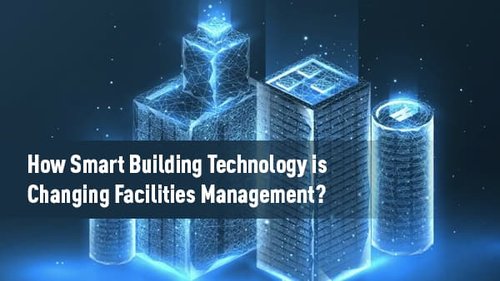
The question is precisely the broad range of possibilities that IoT provides for many facility managers. It can be tough to know where to start with smart building technology because almost every building system has IoT applications. Building automation is no replacement for the ability of a facility manager to direct a team or build smart maintenance strategies. Through keeping an eye on results and pointing out potential problems that would be difficult (and in some cases impossible) to spot with traditional hands-on management, it helps to make the job more convenient.
Flexibility and serviceability are the chief advantages of setting IoT systems apart from other smart building technology. To recognize the importance of these values, consider the monthly energy bill that you receive at home. It is a crucial decision to choose which IoT provider to partner with when implementing smart building technology.
Think about what you would like to do with your initial IoT investment when you explore providers and smart building solutions and ask yourself questions like these. Look for a manufacturer with scalability expertise so that after your initial achievements you can extend to other floors, building systems or facilities in your portfolio.
IoT Applications in Facility Management
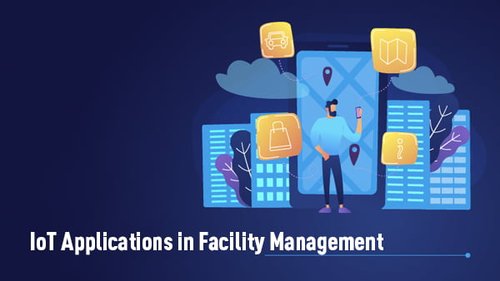
Facility managers can increase efficiency and profit margins using IoT solutions to reduce costs, increase value-added services, extend their scope of service to include new information and enhance their tenant experience. Whoever used "if it doesn't get out of control" for the first time definitely did not live in a digital age in which creativity is queen, change is inevitable, and those who do not adapt will lose big. The companies of facility management are not exempt and are well aware of this argument.
Whoever used "if it doesn't get out of control" for the first time obviously didn't live in a digital age in which creativity is queen, change is unavoidable, and those who don't adapt will lose big. The companies of facility management are not exempt and are well aware of this argument. The rising emphasis on energy waste, emissions and cost of utilities, combined with higher tenant expectations, put immense pressure on Facility Management companies to improve their services. Unfortunately, BMS is not designed to provide data and the real-time responses needed for managers to decide on comfort, performance and employee productivity.
The Internet of Things (IOT) can be described as linked sensor networks and omnipresent computing embedded in physical subject matter, from thermostats to pacemakers linked through wired or wireless networks. Some claim that the digital construction industry still exists in the age of the floppy disc, so IoT solutions are a significant opportunity for FM companies to embrace them. It simplifies the operation and maintenance process and also provides building owners with a variety of services available.
FM businesses will use IoT to build innovative digital technologies to outperform the operating models of their rivals and to meet new client needs. Companies in facility management can add value and increase profit margins by using cost reduction IoT strategies, enhance value-added services, extend their reach through new data and boost their residential experience.
How can facility managers adapt to an IoT connected world?
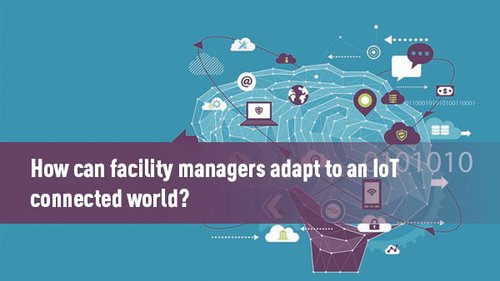
Workplace dominance of the IoT is an inevitable fact, so it is vital that all companies connect to the network and that all FMs are well versed in the potential of this technology. That said, IoT adoption is not a matter of robotizing your entire office, but rather of finding out which metrics are important to your company and your bottom line.
If FMs are concerned about space that is not being used, tools like a resource tracker used in conjunction with sensors will help them determine how it could be used for a different purpose. And because of the amount of data produced by these types of new applications, it is important that FMs have office management software in place that can not only capture and store the wealth of information that is being given, but can also analyse the data and understand its implications for the company as a whole. These perspectives would be invaluable to advise FM policy.
The IoT is having a significant impact on the business world, and its wide range of applications are increasingly changing the tried and tested office model. However, a "smart" building is only useful when combined with the ability to interact with as many other technologies as possible, and must turn the data collected into actionable improvements. As such, it is important that FMs consult their IT department to develop an IoT strategy.
Planning as a team will help organisations find management software that is completely compatible. FMs have an obligation to incorporate technologies that will enable a deeper understanding of the use of buildings, both by analysing data and by complementing existing software, as it is only through these insights that real innovation will take place.
Let's start with the simple way to create a website

Interested in Domitos? Get the Features Guide Today!
Domitos, is world's most sought after facility Management System and we look forward to work with. Digitize your facilities today!